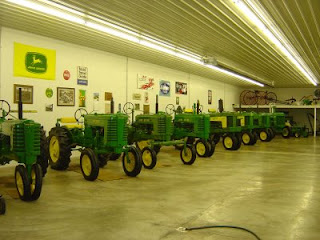We went to Snyder County yesterday to soak up some history from that area. One of our stops was the home of Joseph Hochstetler in Mifflin County.
Joseph Hochstetler was the son of the 1736 immigrant Jacob who was part of the Amish settlement near Shartlesville in Berks County. On the night of September 9, 1754, the settlement was attacked by the Indians and the famous "Hochstetler Massacre" occurred. The story has often been told how the Hochstetler family hid in their cellar while their cabin burned above them. When they left the cellar, Jacob's wife and some of the children were killed by the Indians. Jacob and some of his sons were captured and marched west. Jacob eventually escaped and floated down the Juniata River. He was nearly starved when he finally saw a white man and was rescued.
Jacob returned to Berks County. His young sons, Joseph and Christian, had been adopted by the Indians and learned to like living among them. In 1764-65, the Indians took the Hochstetler boys to Fort Augusta (Sunbury) and returned them to their own people.
Joseph married Anna Blank and lived in Heidelberg Township until at least 1806. In 1810 he first appears on the tax rolls in Mifflin County where he bought a fifty acre farm near McAlisterville. He lived there only a few years and died in 1812. He was buried in a little cemetery near his house.
A few years ago Don and Lenore Saner bought the old Hochstetler property simply because it adjoins their property. The house was in bad shape but they began to restore it. In the process they made two surprising discoveries. First, it originally belonged to Joseph Hochstetler and second, he was Don's fifth great-grandfather. They have done a fabulous job of restoring the place. The house sets on a hill next to the summer house.

The door to the kitchen is on the ground level under the porch. There was a fireplace for cooking in the kitchen which is still in place but was redone by a previous owner and is smaller than it was originally.
The Saners have made one of the rooms on the first floor into a kitchen. The house never had running water in it and the Saners have kept it that way. There is only enough electric in the house to operate some lights. The stove is gas.
 There are three rooms on the first floor and three bedrooms on the second floor. There is no bathroom. All of the walls are the original horsehair plaster. I'm glad the place fell into the hands of people who had both the interest and money to restore it. They live in their own home just down the road and have this house as a hobby. They use it sort of like a cabin. I wonder what Joseph would say if he saw his house today.
There are three rooms on the first floor and three bedrooms on the second floor. There is no bathroom. All of the walls are the original horsehair plaster. I'm glad the place fell into the hands of people who had both the interest and money to restore it. They live in their own home just down the road and have this house as a hobby. They use it sort of like a cabin. I wonder what Joseph would say if he saw his house today.
 The Saners located the iron fence that had been around the little family cemetery, repaired and powder coated it in their shop, and returned it to its proper spot around the restored family cemetery. Joseph and his son John are both buried here. It is believed Joseph's wife was also buried here but nothing exists to establish the fact.
The Saners located the iron fence that had been around the little family cemetery, repaired and powder coated it in their shop, and returned it to its proper spot around the restored family cemetery. Joseph and his son John are both buried here. It is believed Joseph's wife was also buried here but nothing exists to establish the fact.

After we finished touring the house, Don took us into his shed where his collection of John Deere tractors is housed. He has 18 restored tractors, some garden and pedal tractors, a wagon, some plows, a sleigh, and other things. This is where Leroy could not get done looking and talking.


The sleigh was my favorite piece in here.








2 comments:
That house is similar to Varnum's headquarters, down in Valley Forge. The decoration is a bit different, though.
How interesting. I was in Sarasota, Fl a few weeks ago and saw a new book about this massacre in a gift shop. It was written by Vera Overholt but I can't remember the title. I almost bought it but then laid it back on the shelf. It was at the Dutch Heritage Restaurant in Pinecraft. Mary Horst
Post a Comment